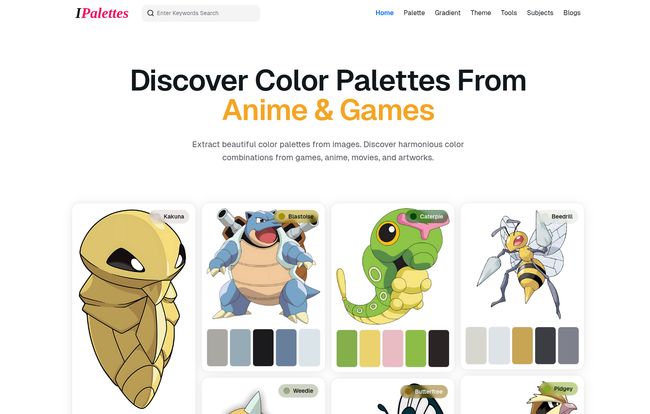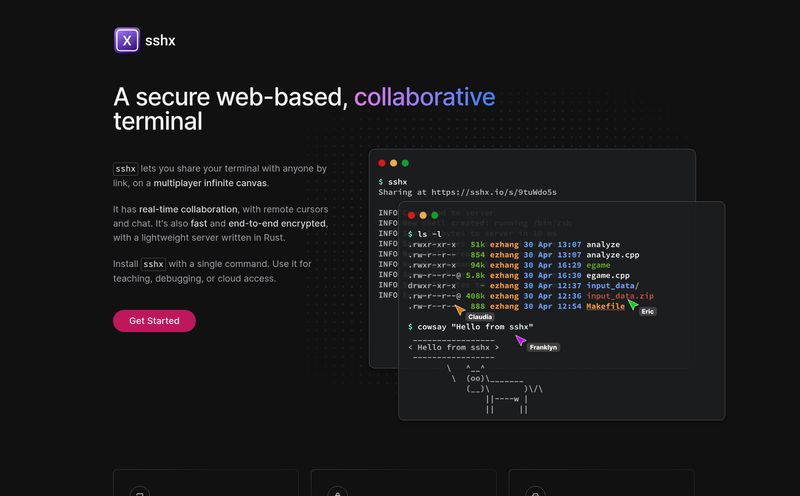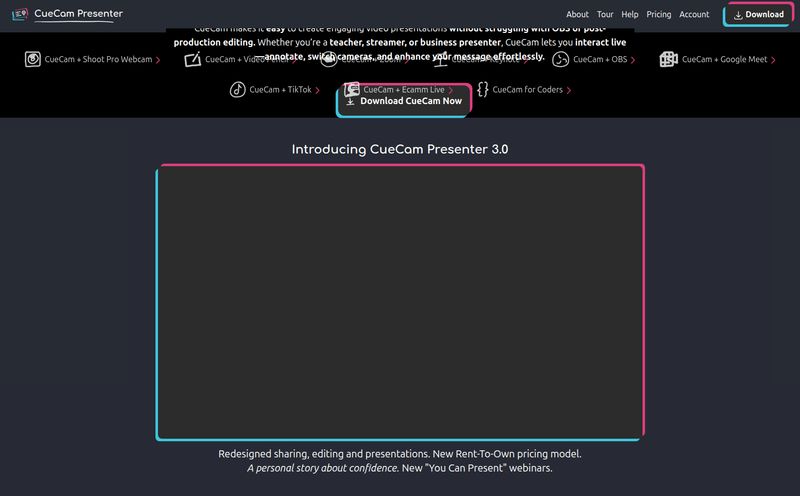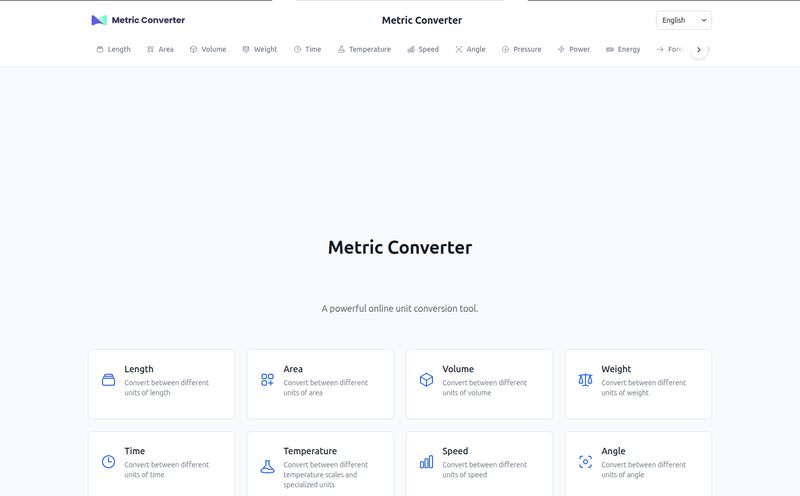Staring at a blank canvas, whether it’s a Figma file, a PowerPoint slide, or an actual canvas, can be terrifying. But you know what’s worse? Having the layout, the copy, the idea... but being completely and utterly stuck on the colors.
I’ve been there more times than I can count. It's the digital equivalent of standing in front of an open fridge, full of food, and feeling like there's nothing to eat. You scroll through Dribbble. You browse Pinterest until your eyes glaze over. You fire up your favorite color palette tool, hit the spacebar a thousand times, and every combination starts to look like a variation of mud or a rejected 80s tracksuit. It’s what I call the "creative color rut," and it’s a real momentum killer.
So, when I stumbled across a tool called iPalettes, which claimed to be an "AI-powered color palette generator based on keywords," my curiosity was definitely piqued. AI for everything is the trend, right? But could it actually help with something as subjective and "feel-based" as color? I had to find out.
What on Earth is iPalettes?
At its heart, iPalettes is beautifully simple. You give it a word or a phrase, and its AI generates a color palette inspired by that concept. Think of it less like a random generator and more like a creative partner who actually understands context. Instead of just mathematically compatible colors, it tries to capture a vibe.
The first thing I saw on their site was a gallery of palettes pulled from anime and games. And yeah, seeing a perfect color scheme generated from Bulbasaur and another from Charizard immediately brought a smile to my face. It's a clever way to show what the tool can do. It’s not just abstract; it’s pulling from things we know and love, instantly creating a connection. Suddenly, the idea of a "sunny day" palette or a "cyberpunk alley" scheme feels totally possible.

Visit IPalettes
Putting The AI to The Test
So, I jumped in. The interface is clean, no fluff. Just a search bar inviting you to type something in. So I did. I started with "misty forest morning."
What came back was… surprisingly good. A collection of soft grays, muted greens, and a hint of a pale, watery blue. It wasn't just a random assortment; it genuinely felt like the keyword I'd entered. It was evocative. I could practically smell the damp earth.
This is where I think the magic lies. It's not about replacing the designer's eye. It's about giving it a starting point. A creative nudge. I remember working on a branding project for a small, eco-friendly coffee shop last year and spending two full days just trying to nail down the primary green. A tool like this could have given me ten solid starting points in about thirty seconds. That’s not a small thing when you’re on a deadline.
The Good The Bad and The Colorful
No tool is perfect, of course. After playing around with iPalettes for a while, I’ve got a pretty good feel for its strengths and where it could improve. It’s a bit of a mixed bag, but mostly in a good way.
Why It’s Staying in My Bookmarks
The biggest win for iPalettes is its ability to break you out of that color rut I mentioned. It’s a fantastic brainstorming tool. By letting you use descriptive keywords, it forces you to think about the feeling you want to evoke, not just the colors you think you should use. This process alone can be a huge help. It’s fast, incredibly easy to use, and genuinely inspiring. You type in "coastal grandmother" and get a palette of sandy beiges, soft blues, and creamy whites. It just gets it. It’s like having a little muse on call, ready to translate your vague ideas into tangible, usable color schemes.
A Few Things You Should Know
On the flip side, the website itself is a little sparse on information. It’s very minimalist, which is great for usability but not so great if you're looking for detailed documentation or an 'About Us' page. It gets straight to the point, which I respect, but some folks might want a bit more context. I've also seen whispers in some forums that users might be asked for phone verification to access certain features, though I didn't run into this myself. It’s just something to be aware of. It's not a deal-breaker, but it’s a quirk.
Who Should Be Using This Tool
Honestly? Pretty much any creative. I can see this being a daily driver for graphic designers and web designers for quickly mocking up different visual directions for a client. It's also great for social media managers trying to create a consistent and aesthetically pleasing feed without spending hours on color theory. For content creators, it can help with branding YouTube thumbnails, blog graphics, or presentations. Even developers who need a quick, decent-looking color scheme for a side project without wanting to dive deep into design theory will find it useful. It’s a low-friction, high-reward tool. The barrier to entry is basically zero, and the potential for a creative breakthrough is huge.
Discovering the Rest of the Toolbox
One thing I almost missed is that iPalettes isn’t a standalone island. If you scroll down to the footer, you'll see it's part of a larger suite of tools. They've got everything from a Hex to RGB converter, a gradient generator, a tool for color matching outfits, and even some fun, quirky ones like "What colors can dogs see."
This makes the whole platform a lot more valuable. You can come for the AI palette generator and stay for the whole host of other handy utilities that can smooth out your design workflow. It’s a bit of a hidden gem in that respect.
The Big Question About The Price
This is often the first question people ask about any new tool, and the answer here is the best one possible. As far as I can tell, iPalettes is free. There’s no pricing page, no subscription pop-ups, no "pro" version being pushed. You just go to the site and use it. In a world of endless SaaS subscriptions, a genuinely useful and free tool feels like a breath of fresh air. Of course, this could always change in the future, but for now, it’s an incredible resource available to everyone.
So, is iPalettes going to design your entire brand identity for you? No, of course not. And it shouldn't. What it will do is give you a powerful, intuitive, and frankly fun way to get past that initial color block. It’s a spark. A suggestion. A starting point that can lead you somewhere amazing.
The next time you find yourself staring at that dreaded blank page, give it a shot. Type in a weird phrase, a feeling, or your favorite Pokémon. You might be surprised by the inspiration you find.
Frequently Asked Questions about iPalettes
- Is iPalettes completely free to use?
- Yes, based on all available information on their website, iPalettes and its suite of tools are free to use. There is currently no pricing information or subscription model mentioned.
- How does the AI generate the color palettes?
- The tool uses an AI model that has been trained to associate words and phrases with visual concepts. When you enter a keyword like "tropical sunset," the AI accesses this knowledge to select a range of colors that represent that idea, creating a cohesive and thematic palette.
- Do I need to be a professional designer to use this?
- Absolutely not! iPalettes is designed for everyone. Its simple keyword-based interface makes it accessible for hobbyists, students, social media managers, and anyone who needs a little help with color, regardless of their design background.
- Can I use the palettes from iPalettes in my commercial projects?
- Generally, color palettes themselves are not subject to copyright. However, it's always a good practice to check the platform's Terms of Service for specific usage rights. For a free tool like this, the palettes are almost certainly fine for commercial use, but it never hurts to double-check.
- How is iPalettes different from other tools like Adobe Color?
- While tools like Adobe Color are powerful and focus on color theory rules (complementary, triadic, etc.), iPalettes takes a more conceptual and semantic approach. It's less about the mathematical relationship between colors and more about the feeling or idea behind them, which can lead to more unique and unexpected combinations.
Reference and Sources
- The official tool website: iPalettes
- For further reading on color theory, Smashing Magazine has an excellent guide: Color Theory for Designers.
- For a different approach to color palette generation, you can check out Coolors.



